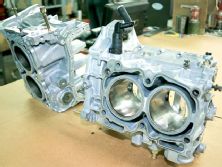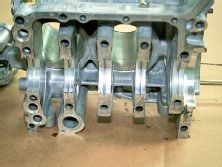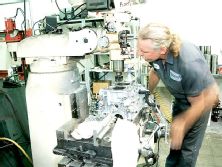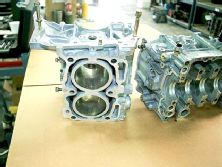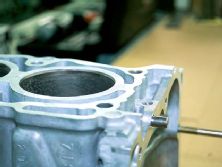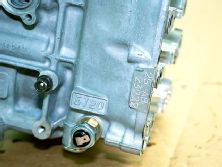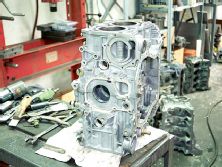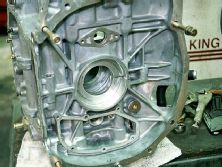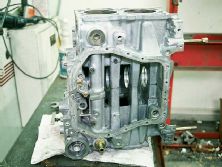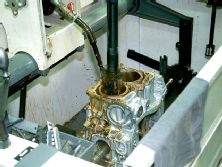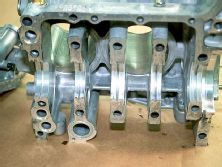While we have gradually discovered how much power an internally stock EJ20 can handle, we've been lucky enough to see others in the industry blow up engines instead of blowing up our own. This allowed us to learn the lesson without paying the tuition (cost of rebuild). One major flaw we've uncovered in the EJ20 isn't in its awkward boxer design, but the routing of the turbo system.
On most of the blown-up Subarus we've seen, we noticed the number three cylinder has often been the dead leg in the engine. Every blown engine I've ever witnessed has either thrown a rod out the block, bent a rod, melted a piston or even cracked the ring lands--all on the number three cylinder.
The turbo is on the passenger side of the engine and the number three cylinder happens to also be on the rear passenger side. One of the theories hinges on the manner in which the turbo, up-pipe and downpipe are encased around the number three cylinder. This causes an abundant amount of heat to concentrate on this one cylinder, potentially over-heating it.
Regardless of the design flaw, there are a couple of equally critical issues that should be addressed on the U.S.-spec EJ20 engine: The factory pistons are cast aluminum and the rods aren't ready for big boost. That brings us to our EJ20 build-up.
Mike Morita from Sparco has a black WRX (featured in the January 2002 issue of Turbo) and just as his car was building more power, the number three cylinder "remolded" the cast piston while also breaking the ring lands.
The engine was pulled and disassembled, with the internal parts sent to HKS and the block and heads sent to RS Machine in Torrance, Calif. Here, Mike Coughtrie worked his magic on the block. Not just your average machine shop, this place is geared for high performance. While Mike was busy machining the engine, HKS was busy lining up the rest of the parts.
Scrapping the inferior EJ internals for much better aftermarket units, the HKS R&D team decided to go with Arias Pistons and Crower connecting rods. Of course, once the engine is assembled, it'll also receive an arsenal of HKS parts, including an upgraded turbo and engine management.
When the engine was disassembled, a cracked combustion chamber was discovered. Naturally, this occurred in the number three chamber. While HKS was managing to get hold of bearings, gaskets and other accessories, the block was nearly finished.
Follow along to see what was done to prep the block for big boost, then check in a future issue for our follow-up article, which will focus on assembly and testing.

